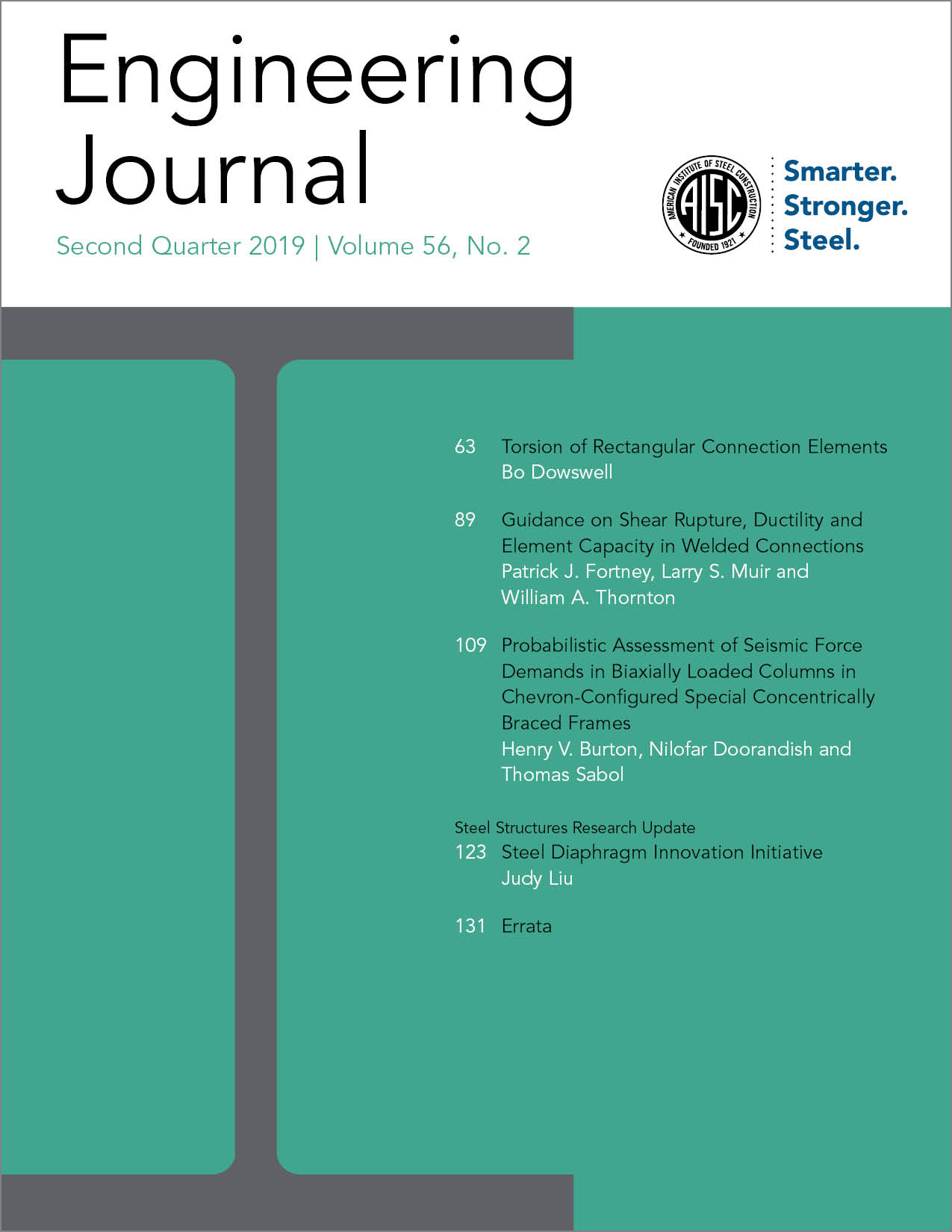Torsion of Rectangular Connection Elements
DOI:
https://doi.org/10.62913/engj.v56i2.1147Keywords:
torsion, torsional strength, torsional rotation, warping, rectangular connection elements, ultimate strengthAbstract
Traditionally, the torsional design of rectangular members has been based on elastic calculations. For member design, this approach is justified because beams subjected to torsion are usually controlled by torsional rotation serviceability limits. However, designs that are based on a first yield criterion underestimate the strength of connection elements. To evaluate the true torsional behavior of connection elements, various factors affecting the torsional strength of short rectangular members are investigated, showing that the torsional strength of connection elements can be predicted with rational analysis models using an ultimate strength approach. A method is proposed for calculating the strength of rectangular connection elements subjected to any possible combination of loads, including torsion. The design method results in a significant increase in torsional strength compared to traditional analysis methods. The method can be used to analyze extended single-plate connections subjected loads in any direction, including axial forces and combined vertical and horizontal shear forces. Three design examples show the proper application of the design method.

